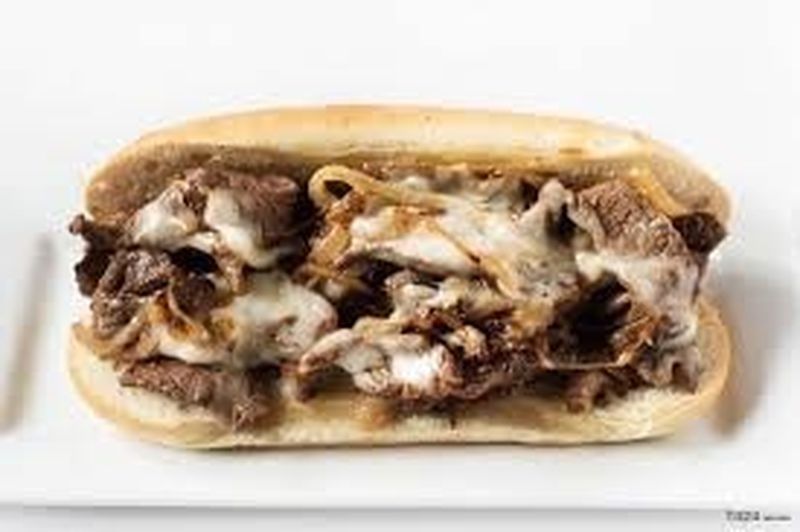CROSS WORLD CULTURES - Time Spent In The Land Down Under
Written by Kimberly Gaskill from Penn State University.
At times I find myself forgetting I am on the other side of the world. The amount of similarities between Australia and the United States is incredible. As much as they're a like however, there are definitely some differences. My immediate realization of a distinction may be one that goes heavily unnoticed by most. As a Nutritional science major, along with a business minor, food accessibility to the public is a huge interest of mine. After arriving in Wollongong, the first thing I was in search for was food. I contacted my Australian buddy in regards to what my best options were. She responded stating that there are several cafes downtown and to just catch the bus. When asking the same question in the US, the response would probably be geared more towards a sit down restaurant or chain; for example Chipotle.
Instead of heading downtown, I got off at campus and decided to have a look around. I found a nice little cafe towards the back that served juices, acai bowls, salads, and wraps. Many would just sit down and enjoy the meal not thinking at all in comparison to the US. Not for me. While waiting for my food I couldn't help but to ponder on the thought of how much healthier this one place in particular was compared to my campus back at home. Going into my third year at Penn State, I can pretty much say I know the campus like the back of my hand. With over 46,000 students, the campus is far from small. While trekking about 30 minutes to class everyday, there are definitely several food options along the way. If one type of restaurant stuck out the most, it'd be bar food, every chain market possible, followed by some sit down restaurants, and then throw in a few salad/ “cafe” places.
At home last semester, we had quite a few internationals studying from countries such as France and Spain. They would comment on the portion sizes in America stating how they couldn't believe just how much food is given during one sitting. I always remember thinking to myself “wow do we really over serve to such a great extent?” A big surprise that makes me understand their amazement of food consumption in the US came from the dorm cafeteria here. There’s hot breakfast every other day (consisting of two or three options), a sandwich making bar for lunch; in which is only available during breakfast, followed by dinner at night. The staff also puts out bread and spreads (upon request) during the afternoon. This truly came as a shock for me as my dorm experience at home was completely different. At Penn State, the dining hall is open from about 7am to 9pm where they have several sections for you to choose from. Everyday there’s a station for breakfast that includes an omelet bar, pancakes, eggs, cereal, etc. For lunch you have a sushi bar, panini/ pizzas, a hoagie line, salad bar, burgers/fries, and quesadillas. For dinner, there’s always a themed dinner section, “home cooked meals,” as well as the hoagie line, panini/pizzas, and salads. In the center there’s a Starbucks/ creamery ice cream and a refrigerated wall of milk, juice, soda, Powerade, etc. Food is available at all times of the day at home, whereas here it’s only 7:30am-10:30am and 5:30pm-7:00pm.
After breakfast the first day, needless to say I was starving. Going from typically eating 5 mini meals a day with some snacks in between to a “light” breakfast and packed sandwich for lunch was really hard, but also eye opening. It goes to show how much more Americans truly do eat compared to the rest of the world. Although from a nutritional standpoint I don't entirely agree with the concept of a sandwich bar/ breakfast options, I do find the dinners to be a bit of fresh air. Not having those fried options available to you so easily makes you eat the home cooked meals provided. These meals are fresh, unprocessed, typical at home dinners. There are several meat/vegetarian options, fruit, and vegetables. Nutritionists world wide stress eating at home to avoid the high sodium, cholesterol and fat intake at restaurants, and I think this really helps with that concept.
During my time here, I have also been to several cafes and only a handful of restaurants. In the US it would be the complete opposite. Cafe’s on the east coast would be considered hard to find compared to Australia. I can’t really say I've ever sat down to eat at one. At school, they serve more as a place to study for the day. The idea of cafes is a great one though as it promotes fresh products over processed and prepared food. Americans seem to be so prone to the fast pace, on the go lifestyle and will likely choose the fastest/ cheapest option: fried foods, tasty cakes, and sugary drinks. From my experience alone, I have found Australians to be significantly more laid back, not in a rush, and take the time to sit down in a cafe to enjoy a nice healthy, fresh meal.
Differences I have found during my time in Australia
BREAD: A very interesting concept I learned about recently was their production of bread. I have read so many blog posts comparing the US to Australia in general terms and almost every single one has stated their shock of bread. I didn't really realize a big difference in the type of bread here (aside from wholemeal vs whole wheat). However, I recently became aware of the fact that US bread almost always has sugar in its main 4 ingredients, as well as high fructose corn syrup or other sweetening agents. Australian bread steers clear of sugar in their production of bread, keeping their main ingredients wholemeal wheat flour, water, rye meal, and yeast.
COFFEE: If there’s one thing I have learned from my time here, it is that Aussies love coffee. Any American will tell you that Starbucks is an obsession nation wide. In Australia, instant coffee is very common. After having a conversation the other day with an Aussie, I learned that coffee made at home is always instant coffee. I brought up the use of a K-Cup maker or coffee maker, which drew a blank to her. From a non coffee drinker, I can attest that as hard as it may seem to believe, Australia is highly more addicted to coffee than Americans. Even meetings whether with friends or the abroad program has coffee in mind.
FRUIT AND VEGGIES: As discussed in nutrition class this past week, Australians eat their fruits and vegetables seasonally. Just the other day I had gone into Coles to pick up some produce when I had noticed a mango was priced at a little under five dollars. I was mind blown, wondering just why they were so expensive as Australia is a tropical environment. When talking in class, I became aware that due to the high prices they choose to eat only seasonally. With the various climates all around the US, access to produce year round is essentially pretty common with an exception of an increase in prices by roughly a dollar.
SAUCES:
- Barbecue: Of extreme popularity here. Reminds me of the South.
- Honey Mustard: My favorite condiment (aside from ketchup of course), but is unfortunately no where to be found in Australia.
- Buffalo Sauce: Always on my go to foods at home and a great sauce to add to your wings for a football game. However, cannot find buffalo sauce menu options anywhere here.
- Tomato Sauce vs Ketchup: The American source of ketchup contains various spices, vinegar, garlic, and onion. It is slightly sweeter and thicker. Tomato Sauce is exactly what it sounds like. Its more of a tangy, liquid
Food Unique to Australia and American (New Jersey in particular)
AUSTRALIAN MUST TRIES:
- Vegemite: A salty tasting breakfast spread that is put on toast (usually with butter). It is a thick, black substance made from yeast and spices. Great source of all the B vitamins, while relatively low in sodium for its taste. Not something I am too fond of, but definitely a staple.
- Meat Pies: Can’t attest to how good these are because I don't eat red meat, but from what I have been told, it is definitely something you should try. It’s a small “hand-sized” pie filled with meat (sometimes kangaroo), along with spices and gravy.
- Spinach rolls: A flaky roll filled with spinach and feta. One of my favorite Aussie snacks!
- TimTams: You simply cannot leave Australia without trying a TimTam. They are incomparable to anything in the US. TimTams consist of a chocolate cream between two biscuits and then covered in chocolate. One of the best things I have had here is a TimTam Slam (thanks to my director for introducing it). Follow this diagram and you'll find yourself craving more!

AMERICAN MUST TRIES: Trying to find American “staple foods” is rather hard. American culture varies from everywhere you go so food that is unique to a certain state may be one that another has never heard of. Therefore, my suggestions are New Jersey based and of popularity to us.
- Pork roll: A unique type of meat eaten at anytime of the day. It would best be described as processed pork cut into thin circular pieces. My personal favorite way to eat it is through a pork roll, egg, and cheese on an everything bagel (as pictured).
- Bagels: I’m sure you know what a bagel is, but you haven't truly had one until you visit New York or Jersey. Bagel shops are everywhere you go serving fresh home made bagels of various flavors (everything, poppy, blueberry, rainbow, spinach, etc).
- Cheesesteaks: Consists of finely chopped up beefsteak with whiz (cheese) and fried onions served on a hoagie roll (as pictured). My personal favorite is a buffalo chicken cheesesteak. Chicken replaces the steak, still includes cheese and fried onions, but hot sauce is also mixed in.

- Pizza: Just like bagels, you haven't truly experienced pizza until you've been to New York or Jersey. Pizzerias are on every block. They serve slices as well as pies (hard to find pizza by the slice in Australia). Slices are typically $2 depending on the toppings. The pizza is thin crusted and has a bit of a crunch. There are several different types to try (buffalo chicken, cheesesteak, spinach, sausage, etc), but a plain slice will always be the best.
- Old Bay Fries: Old bay is a seasoning that originates from Maryland. It’s a blend of spices typically used to season crab legs. However, it is very popular to put on french fries (hot chips) and dip into melted cheese. They go great with buffalo wings!
Related Posts

Differences between US & Australian academic culture
Study abroad is meant to be different to what you are used to back home. So be prepared for differences in and out of the classroom. Academic Calendar Australia: The... keep reading

EAT, DRINK, EXPLORE: SYDNEY
BEST FOOD TO EAT IN SYDNEY While in Sydney, a stop at Black Star Pastry for a slice of their signature Strawberry Watermelon Cake is practically mandatory. The bakery opened... keep reading

Eat, Drink, Explore: Melbourne
@cieestudyabroad Eat, Drink, Explore: Melbourne, Australia Check out our NEW study abroad programs in Melbourne in our bio! #ciee #cieestudyabroad #studyabroad #melbourne #australia #eatdrinkexplore Show Me How - Men I... keep reading
